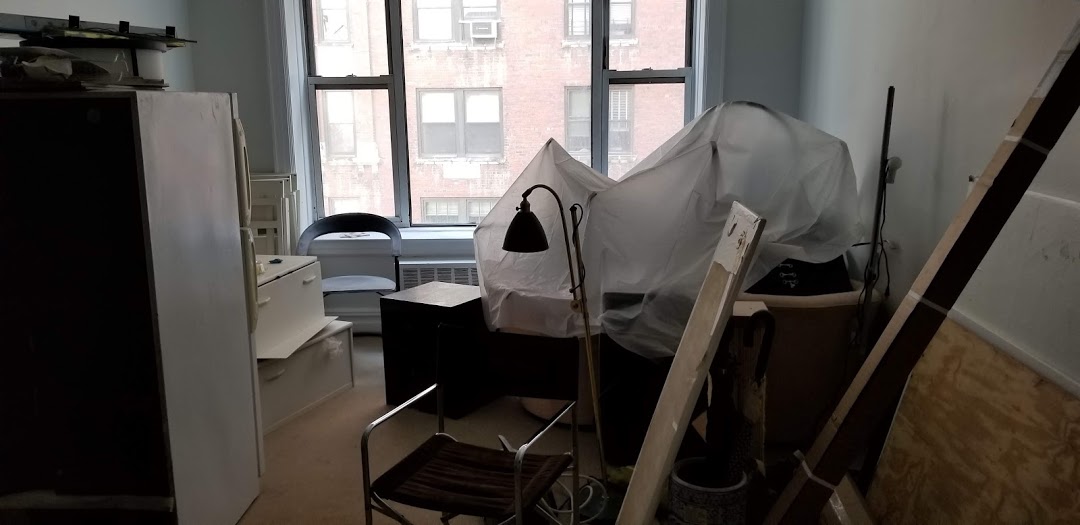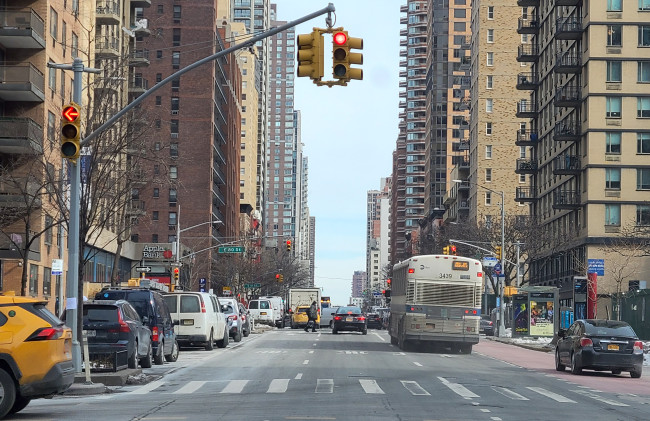The landlord from hell, and why my friend still lives in his building

The apartment suffered a flood and mold infestation and was stripped down to the lathing—and stayed that way for a long time.
Mary Lowengard
It’s hard to believe all the drama at the New York City apartment where my friend—let’s call her Dorrie—has lived since before Governor Cuomo took office, and I’m talking about Mario Cuomo here. Dorrie has put up with years of limited amenities and recently a horrific flood that forced her out for 18 months, and yet she is still there.
The apartment is a two bedroom, one bath on the top floor of a 10-unit elevator building circa 1887 on the Upper West Side.
Here is the good, the bad and the ugly. The building has an elevator, but no laundry facilities. It is in a safe, reputable, accessible neighborhood but there’s no doorman or live-in super. A porter? Hah. The light is great, kitchen and bath are windowed but like many oldsters, the apartment is always too cold in the winter and too hot in the summer. Neighbors are great, rarely seen or heard but there’s high turnover among market-rate tenants.
In short, to paraphrase Dickens, it was the best of apartments and the worst, all rolled into one.
The icing on the cake is that this apartment is rent stabilized. Dorrie’s rent has only slightly more than tripled over her 40-plus-year tenancy, remaining consistently one-third of the neighborhood average. That’s important to her because she’s an artist and a teacher and needs a rent she can afford. Some might call this rent very reasonable. To all others, it’s jaw-dropping.
Editor's note: Brick Underground's Inside Stories features first-person accounts of interesting, real-life New York City real estate experiences. An earlier version of this post was published in April 2021. We are presenting it again here as part of our winter Best of Brick week.]
Quirky charm, and a boiler older than Methuselah
The building does have a quirky charm. Dorrie’s apartment was last renovated in the 1950s, evidenced by its mid-century, now retro-chic kitchen and Mamie Eisenhower bathroom. A tenant prior to Dorrie installed extensive cabinetry perfectly leveled to accommodate the sloping wood floors.
Until it was replaced in the late 1980s, Dorrie and her neighbors were convinced that the boiler was original to the building, producing intermittent, tepid, noisy heat throughout winter. Hot water might take 40 minutes to arrive, and disappeared if another tenant decided to bathe. Dorrie shrugged these inconveniences off and kept a stock of heavy sweaters on hand for visitors who got chilly.
Ownership of the building has turned over three times during Dorrie’s tenancy. The most recent regime, like all previous, made no secret of its ambition to push out the tenants and sell the building to a developer. Stabilized tenants made this into a waiting game for the landlords; unhappily for Snidely Whiplash, in 2014 the building was designated part of a historic district, ending the teardown scheme and the pipe dream of a multi-story, glass-fronted condo and all the greenery (i.e., cash) it would put in the by-then-former-landlord’s pocket.

Curses, foiled again!
In September 2018, Dorrie left for a four-month fellowship in Europe. Not long after, a storm of biblical proportions flooded the building, taking out the elevator. A month later, a second storm again brought lots of water into the building. The recently repaired elevator was again down for the count. This time, everyone bailed. Except for Dorrie, still out of town, still planning to return by Christmas.
An exasperated tenant complained to the city. This led to a blanket stop work order, effective immediately—as in, do not pass go, do not stabilize the incomplete work—stop now! A departing worker shut all the windows and cranked up the heat, perhaps hoping to dry out the building. Not such a good idea. The result: A massive mold infestation.
From across the ocean, Dorrie monitored the situation, but was unaware of this latest development. Communications from building management were less than forthcoming, and suggested things were under control.
Dorrie returned in late December to a horrific scene. The building was uninhabited and uninhabitable. Her apartment had no ceilings and walls were stripped to the lathing. Furniture, art, and other belongings were piled up on one side of the main room, isolated behind humidity-enhancing plastic sheeting.
Because damage resulted from neglected roof conditions, Dorrie’s insurance company declined to assist. The landlord assured Dorrie her apartment would be ready in six to eight weeks…every week for the next six months. Meetings were taken. Promises were made.
In the fall of 2019, a full year after the floods, not much had changed.
At that point, Dorrie and the other stabilized tenants received a letter from the landlord that she calls "a prisoner’s dilemma memo."
“Dear Tenant,” it began before launching into a complaint about his inability to act on his original plans, and offered offending tenants a nominal sum to vacate. The subtext: Grab it all and vamoose. First one out might get to claim the entire amount. Stay? You’ll get nothing. Dorrie laughed. Out loud.
By early 2020, the mold was remediated, but her apartment still lacked walls and ceilings. Dorrie continued to camp with family and friends, renting rooms, making the best of a bad situation.
At long last, the city, likely weary of Dorrie’s weekly calls, rounded up the troops.
Two dozen inspectors, in pairs, each with their own specialty, appeared at the building en masse. They reviewed the premises top to bottom, roof to boiler, issuing dozens of violations, including longstanding issues not due to The Flood.

Finally, lights, camera, action!
Workers began to show up in Dorrie’s apartment. The landlord broke tradition and called to suggest she could move home in a month. Ever hopeful, she headed off to Europe again for another short-term residency.
And then, Pandemic! Dorrie emailed me from abroad, asking me to check on her apartment before her unanticipated early return due to Covid-19; she needed a place to quarantine. I located my keys and headed up. Yikes! It was an unholy mess!
Kitchen appliances were sitting in the living room. Construction debris was everywhere. The lobbies and hallways were still in a sad state and everything was filthy. Yet again, the owner proved to be a liar, liar pants on fire!
Why there’s no place like home
Dorrie returned to the U.S. on March 15th, and quarantined in a downtown hotel. She was permitted to move home for the second week. The building was empty, but the city was in lockdown and she had no other place to go. She cleaned. She noted damage. She cleaned. She painted the parts of the apartment the landlord refused to be responsible for. She cleaned. She drew up a punch list with 30-plus items, and made daily attempts to reach someone in management.
You may wonder, given these horrid conditions, why did Dorrie stay on?
In her own words, "An amenity-laded apartment implies a higher rent that would prevent me from doing the work I want to do. I put up with the hot and cold running idiosyncrasies, this situation notwithstanding, that are typically more inconveniencing than intolerable. Stabilized rent has allowed me to build the life I want. I expect to be here another 30 years,” she says firmly.
Her advice to others in this situation? “Learn to deal with knuckleheads," she says, “especially those whose motto is ‘Get it right the third time.'”
In retrospect, she says that if she had known how long the repairs would take, she would have extended her fellowship the first time the building flooded. And after six months, she would have told her attorneys to be more aggressive.
Lastly, she advises, “Beware when the answer to your questions is always ‘soon.’ Or ‘I’ll have to get back to you.’ Keep your eye on the ball.”
Dorrie is back home now, and happy to be there. Her game plan for the future: Speak softly and keep that big stick handy.
Mary Lowengard is a writer and editor who has been in a New York Real Estate of Mind since 1971.
You Might Also Like






























